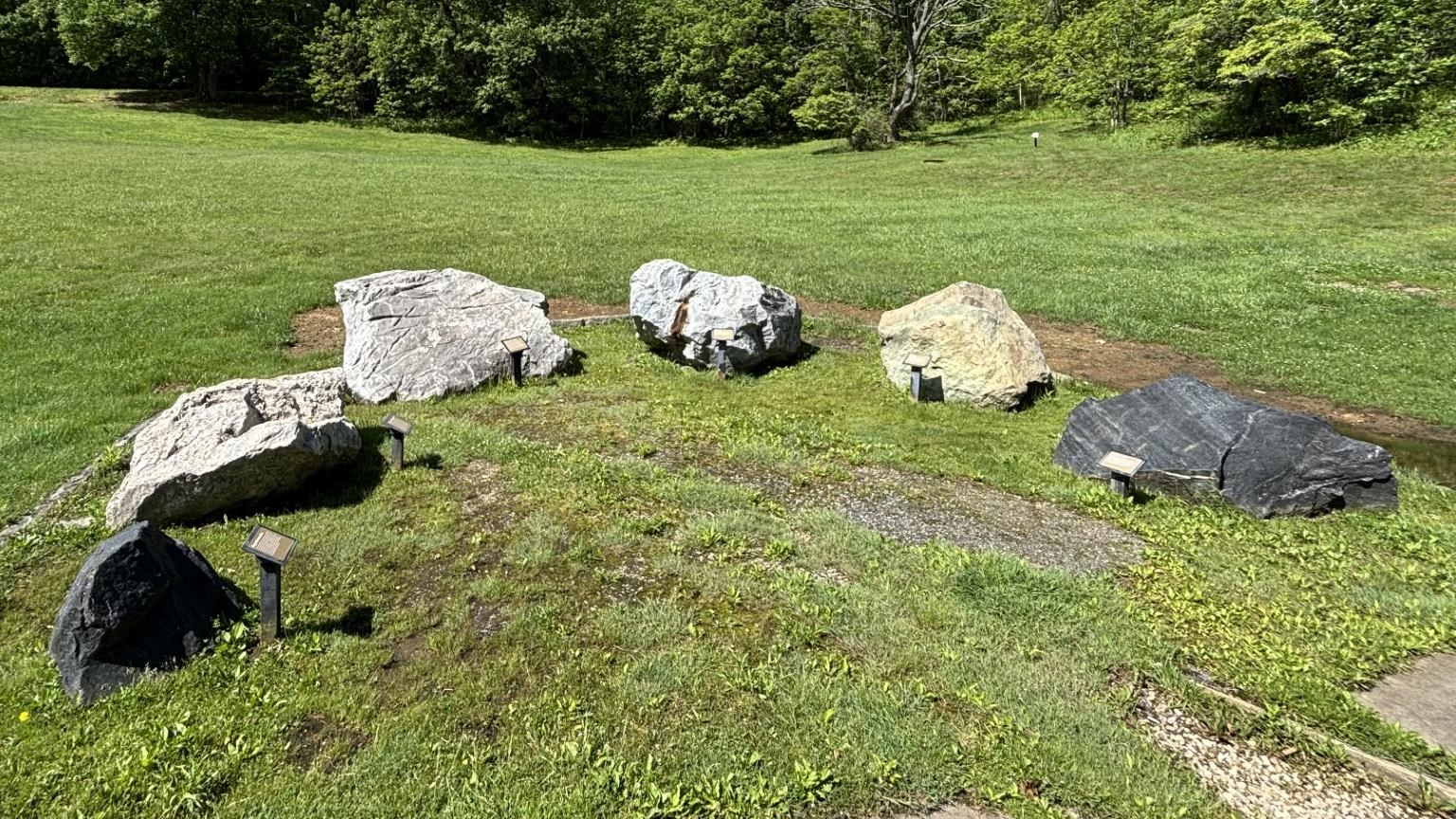Last updated: May 22, 2025
Place
Museum of North Carolina Minerals Rock Garden

NPS Photo
Benches/Seating, Historical/Interpretive Information/Exhibits, Parking - Auto, Tactile Exhibit
The Rock Garden in front of the Museum of North Carolina Minerals gives visitors a glimpse of some of the different varieties of minerals that are found throughout the Blue Ridge Mountains and in particular the mining areas near Spruce Pine, NC.
Magnetic Iron Ore
This ancient magnetic specimen is more than one billion years old. It was extracted some 25 miles from here near Cranberry, NC from metamorphic rocks that are among the oldest in the Appalachians. The specimen consists almost entirely of magnetite, a naturally magnetic form of iron oxide. A small magnet will adhere to this rock. Iron produced from the Cranberry Mine helped supply the Confederacy during the Civil War and was used to make Springfield Rifles during World War I.
Alaskite & Pegmatite
This 380 million year old rock consists mainly of three minerals: feldspar, quartz, and mica. All three represent an important economic resource for the neighboring community of Spruce Pine. The feldspar is mined to make glass, ceramics, dinnerware, electrical insulators and pottery. Most of the feldspar used in the U.S. comes from the Spruce Pine region. The quartz is especially valuable since it is a highly purified form found in few other places in the world. It is essential for the manufacture of computer chips, fiber optics, and halogen bulbs. The mica is used in cosmetic eye glitter, specialty paints, drywall compounds and added to plastics to improve strength. This rock also contains small amounts of fluorescent minerals. They will glow under a florescent light.
Dolomitic Marble
Dolomite rich marble is often used in the manufacture of agricultural fertilizer and other magnesium-rich products. This specimen, from nearby Bandana, NC, was part of a rock that was quarried to make grave markers for military cemeteries. The marble at Bandana is rare in the Blue Ridge and has an interesting history. It originated as a carbonate sedimentary rock of biologic origin from algae and other one-celled organisms that accumulated on an ancient ocean floor nearly 700 million years ago. Pressure, heat and fluids converted the once soft organisms into the durable rock we see today.
Dolomite
Dolomite is a sedimentary rock similar to limestone. Dolomite is quarried and crushed for use as an agricultural fertilizer. The magnesium it contains is a necessary plant nutrient. The magnesium is also extracted for medical purposes, while the entire rock makes an excellent construction aggregate. Shady Dolomite of the Early Cambrian age is exposed in areas such as Linville Caverns and Woodlawn, NC.
Dunite
Olivine is the primary mineral in this igneous rock, although there are also small amounts of talc, anthophyllite, chromite, vermiculite, serpentine, magnesite and opal. The rock formed prior to the Ordovician Period over 450 million years ago. This specimen came from nearby Green Mountain, NC home to one of the few active olivine mines in the US. Companies mine this rock and crush it for use in the iron and steel industry. It is used to manufactor refractory bricks for furnaces and stoves, for casting metals in foundries and for sandblasting.
Amphibolite
Hornblende, a variety of amphibole, is the primary mineral in this specimen, although the rock also contains quartz, feldspar, biotite, mica and small grains of red garnet. Stone companies quarry and crush rocks like this for use in construction and for surfacing roads. This specimen is around 700 million years old and was quarried here in Mitchell County. It comes from the Ashe Metamorphic Suite, the most widespread geologic formation in the Blue Ridge Mountains.
